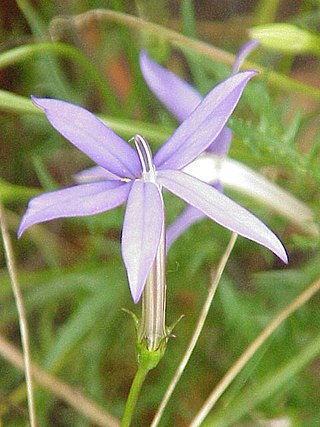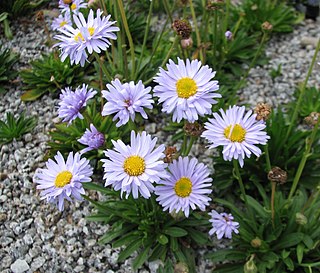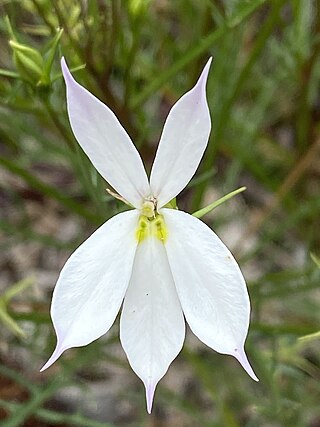George Don was a Scottish botanist and plant collector.

Microseris lanceolata is an Australian alpine herb with yellow flowers and one of three plants known as murnong or yam daisy along with Microseris scapigera and Microseris walteri.

Isotoma is a genus of annual and perennial herbs in the family Campanulaceae and are native to Australia and New Zealand.
The murnong or yam daisy is any of the plants Microseris walteri, Microseris lanceolata and Microseris scapigera, which are an important food source for many Aboriginal peoples in southern parts of Australia. Murnong is a Woiwurrung word for the plant, used by the Wurundjeri people and possibly other clans of the Kulin nation. They are called by a variety of names in the many different Aboriginal Australian languages, and occur in many oral traditions as part of Dreamtime stories.

Microseris scapigera is a yellow-flowered daisy, a perennial herb, found in New Zealand and Australia. It is the only New Zealand species of Microseris, and one of three Australian species along with Microseris lanceolata and Microseris walteri. It is classified in a group of plants, the tribe Cichorieae, that includes chicory and dandelion.

Grevillea scapigera, commonly known as Corrigin grevillea, is a species of flowering plant in the family Proteaceae and is endemic to a small area of the south-west of Western Australia. It is a prostrate to weakly ascending, suckering shrub with divided leaves, the end lobes broadly triangular and sharply-pointed, and spikes of white to cream-coloured flowers held above the foliage.

Townsendia scapigera is a species of flowering plant in the family Asteraceae known by the common name tufted Townsend daisy. It is native to the western United States, where it grows in mountains, sagebrush, and other habitat.

Isotoma axillaris, commonly known as rock isotome or showy isotome, is a small herbaceous perennial in the family Campanulaceae. It usually has blue or mauve star-shaped flowers from September to May. It may also be called blue star, star flower, or laurentia.

Brachyscome scapigera, commonly known as tufted daisy, is a perennial herb in the family Asteraceae. The species is endemic to south-eastern Australia.

Isotoma hypocrateriformis, commonly known as Woodbridge poison, is a small herbaceous perennial in the family Campanulaceae native to Western Australia.

Isotoma pusilla, commonly known as small isotome, is a small herbaceous perennial in the family Campanulaceae native to Western Australia.
Isotoma luticola is a small herbaceous plant in the family Campanulaceae native to Western Australia.

Isotoma petraea, commonly known as rock isotome, is a small, herbaceous plant in the family Campanulaceae occurring in arid regions of Australia. It has single, purplish-blue flowers on smooth, slender branches from February to November.

Isotoma fluviatilis, the swamp isotome or blue star creeper, is a small herbaceous perennial plant in the family Campanulaceae, native to Australia.

Isotoma anethifolia is a small herbaceous plant in the family Campanulaceae and is endemic to eastern Australia. It has single, mostly white flowers in the leaf axils and slender stems.

Abrotanella scapigera is an endemic angiosperm of Tasmania, Australia. It is a member of the family Asteraceae, commonly found in alpine regions of northwest and south-central Tasmania. This species is named after its characteristic sparsely leaved flowering stem that distinguishes it from the other 18 species of the Genus.

Microseris walteri is an Australian perennial herb with yellow flowers and edible tuberous roots, and one of three plants known as murnong or yam daisy along with Microseris scapigera and Microseris lanceolata.

Goodenia scapigera, commonly known as white goodenia, is a species of flowering plant in the family Goodeniaceae and is endemic to the south-west of Western Australia. It is an erect, perennial herb or shrub with linear to narrow egg-shaped leaves clustered near the ends of the stems, and thyrses of white flowers with purplish spots.

Trachymene scapigera, also known as mountain trachymene, is a species of plant in the ginseng family that is endemic to Australia.
















